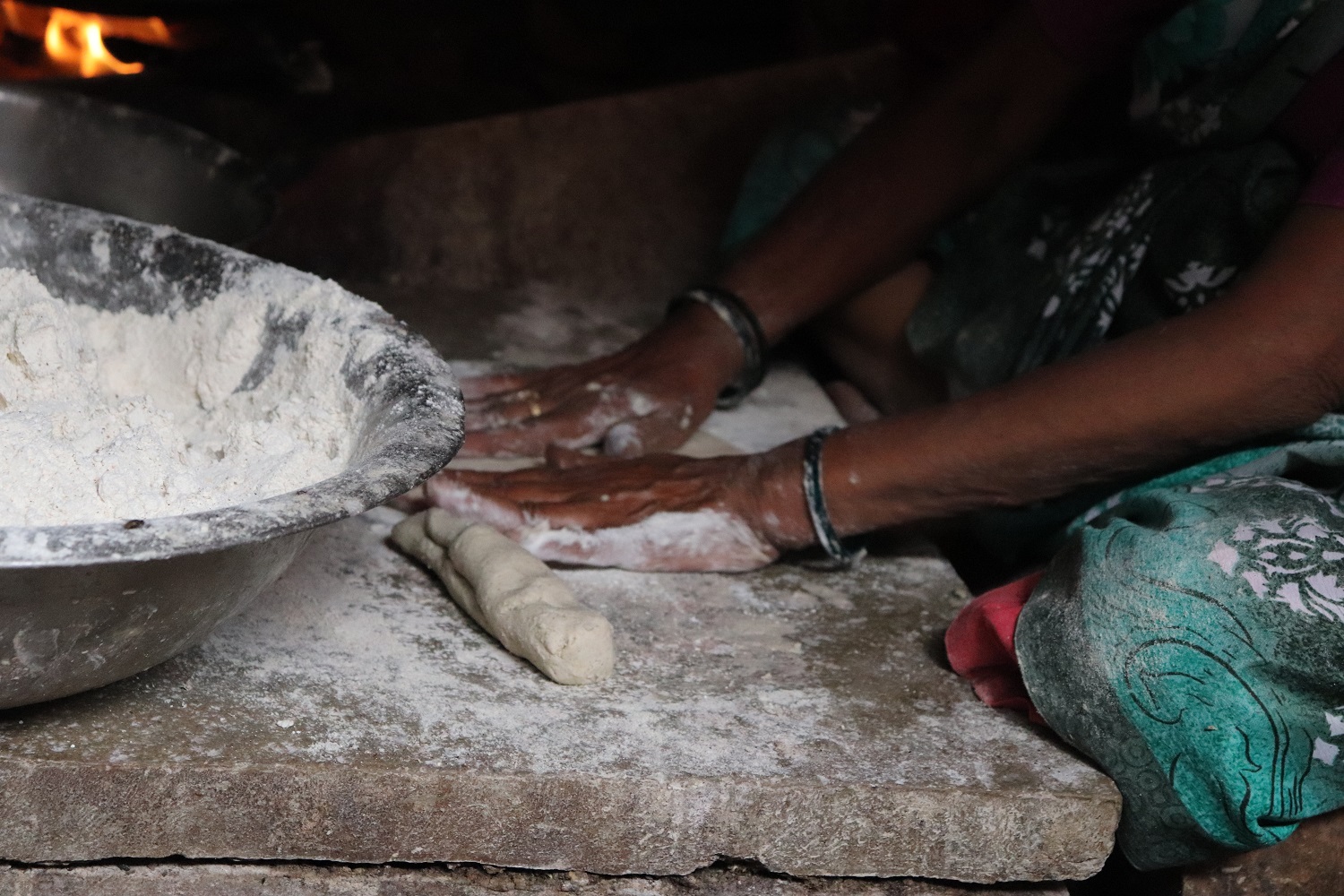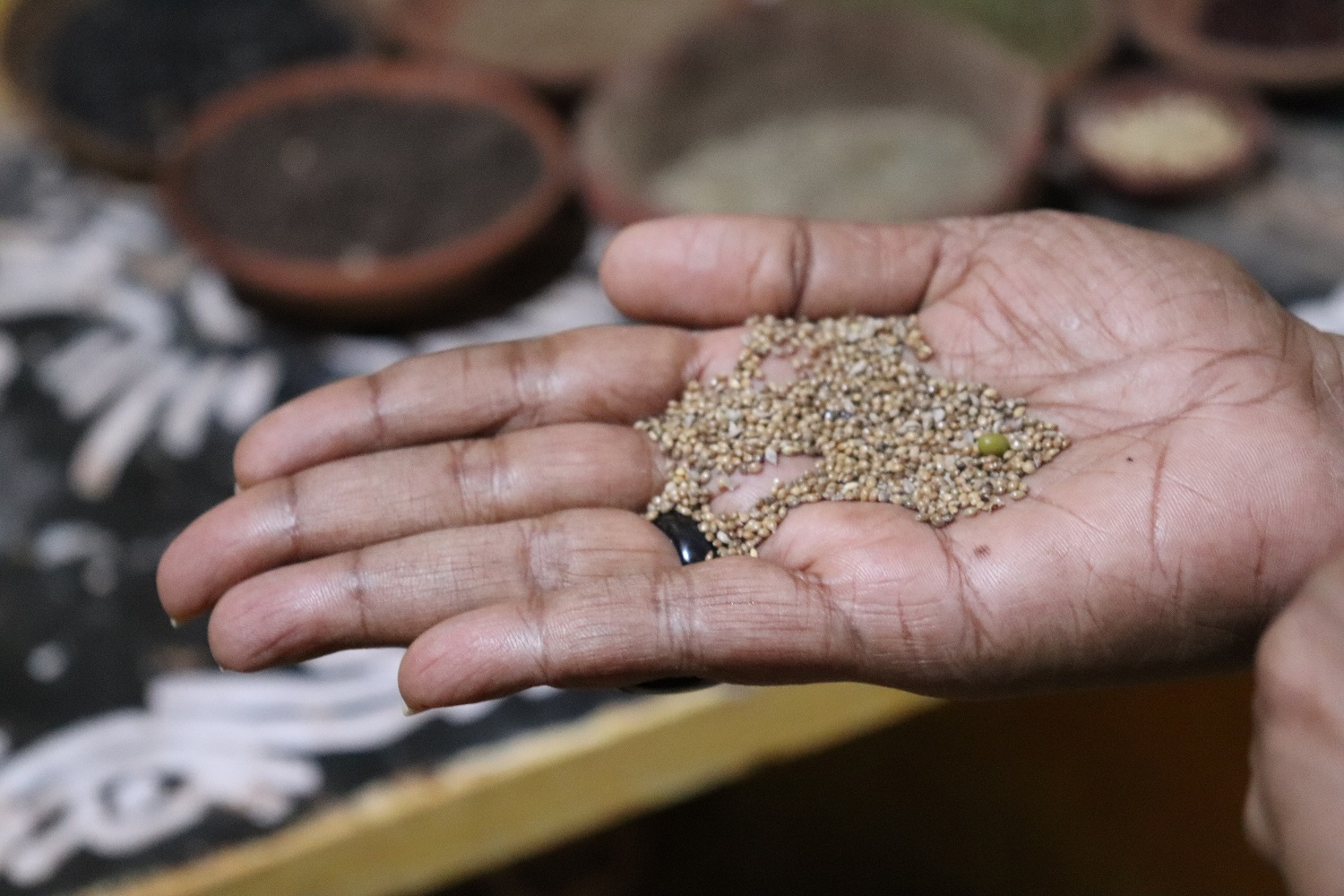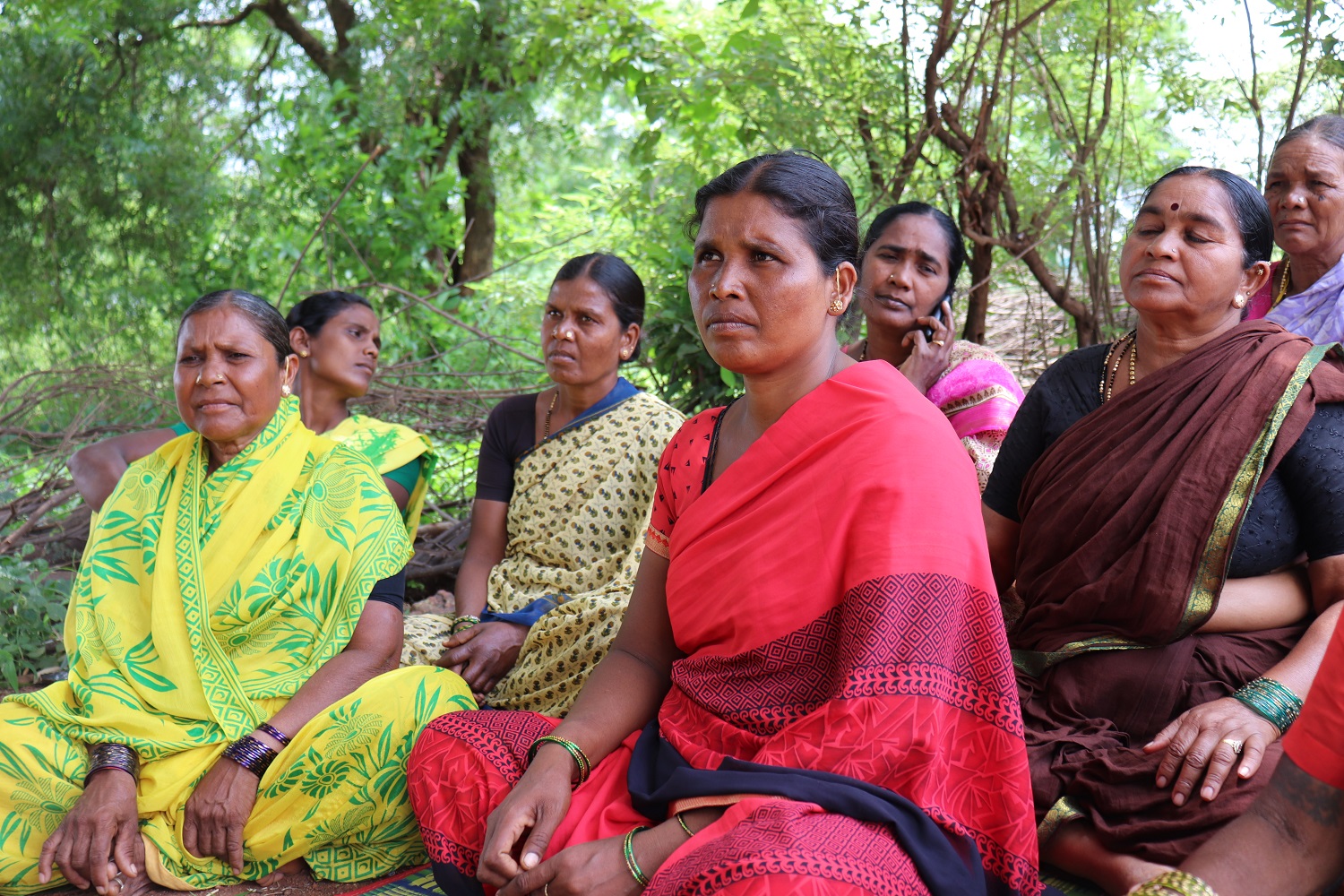Against the Grain: Fighting Corporate Agriculture through Women’s Solidarity
Leah Sullivan
Thirty years ago, the village of Pastapur was struggling. Dalit and Adivasi (indigenous) people who lived there did so in poverty, surviving from tiny plots of inhospitable land. Many more were landless agricultural labourers, eking out a living from neighboring farms. Hunger was a constant threat, and young people left for life in the city. Today, this has all changed.
“These days, other villages come to us for support”, we are told by village elder Chandramma, whose warm smile and quick wit easily overcome the language and cultural barriers otherwise between us. Over the last 30 years, small scale farmers in the area have developed an organic, biodiverse, and rain fed permaculture system, with support from the Deccan Development Society. The communities have gained their strength through the practice of sanghams (women’s community groups), where women collectively make decisions about agriculture and finance, share seeds, information about farming methods, ask for and offer help with weeding. As a consequence, the community is thriving. Landless families have managed to buy plots. Young people are staying or returning to the community, and no one goes hungry.
It’s a very different story from those that GAATW’s partners usually encounter among rural Dalit and Adivasi communities. Dalit and Adivasi women are disproportionately represented among India’s sizeable population of internal migrants, forming the backbone of sectors with some of the poorest pay and working conditions, such as domestic, garment and construction work. Many of these women have moved into this sector from a background as small scale farmers or landless agricultural labourers, forced into migration through the increasing unviability of their livelihoods.
GAATW’s approach is premised upon the understanding that trafficking and labour exploitation are an outcome of an economic system that works in the interest of an elite minority. Solutions must therefore locate trafficking in the context of our social, political and economic realities and seek transformative change. While we support the rights of migrants to work and live at destination sites, a structural approach means ensuring that people are not forced into migration for survival in the first place.
If we want to prevent forced migration into precarious work then we must think about the underlying phenomena of rural distress, climate change and land grabbing, and to identify strategies of resistance. Strengthening communities through models of community solidarity and feminist leadership, like those enshrined in the sanghams, and using practices of sustainable and biodiverse agriculture is one that appears to be worth replicating.
The challenges in doing so are many.
Who is a farmer?
|
|
| Members of the Pastapur Sangham, Telangana. Image credit: Leah Sullivan |
Women like Chandramma are challenging deeply held stereotypes about farmers in rural India, from that “turbaned, mustache-twirling” man, to one that more accurately depicts who does agricultural work in the country – the vast majority of farm work in India is done by women.[1]
This invisibility runs throughout law and policy, we learn later, through laws which mention only men, and through statistics of farmer suicides, which fail to count those suicides of women farmers, only “farmer’s wives”. PV Satheesh, who heads Deccan Development Society, an NGO dedicated to women-led regenerative agriculture, notes that although the discourse has started to change, recent shifts towards monoculture and machinated cash crops have shifted that dynamic and taken the power away from women farmers.
Patriarchal norms
Traditionally, in this part of the country, land is owned by men and inherited along patriarchal lines, from fathers to sons. However, in the 75 villages practising biodiverse sustainable farming, some women are bucking the trend – holding the land under their own name. Some more are starting to pass on their land titles not to sons, but to daughters or daughters-in-law.
Satheesh sees this move as a reflection of the true decision making power within farming work, where men are the physical labourers, acting on the decisions and instructions of women, who decide where seed will be planted, and are natural custodians of the land. Swaroopa, a farmer we speak to agrees: “The men grouped together and wanted to sell our land to a factory, because it was of poor quality. We women refused. We didn’t want to sell mother earth who feeds us every day.”
Collective action vs individual entrepreneurship
Sanghams, are groups of between 40-60 women, primarily from Dalit communities, in 75 villages across the district, that meet once a week to discuss common problems, make decisions about farming and finance, share seeds, information about farming methods, ask for and offer help with weeding and other tasks.
The Sanghams, they say, help them to discuss other problems in their lives too, around domestic violence and health, and have strengthened women’s intergenerational solidarity and identity as workers and as farmers. The groups have been a key in bringing farming expertise back from corporate headquarters and into farming communities and the heads and hands of women.
This approach - promoting policy change through successful alternative action - distinguishes them from ‘self-help groups’ (SHGs), which often focus on individual problems, and promote the idea of individual entrepreneurship, including micro-financing to solve structural and political problems, relying on women’s social capital to absorb the financial risks of debt. The state-supported SHG movement in India has not been without its critics – some referring to it as the “neoliberalisation of civil society”. The farmers of DDS see the thinking behind SHGs – of self-reliance, female entrepreneurship – as a poor solution to deeper structural issues of inequality and discrimination that require comprehensive policy reform instead of piecemeal stopgaps.
Fighting corporate monoculture
On our way to Pastapur we pass field and after field of the same green plant. It’s BT cotton, we are told, – a cash crop, genetically modified to be resistant to a common pest. Farmers who grow BT cotton have to purchase seeds every year (because the seeds don’t reproduce), as well as fertilisers and pesticides produced exclusively by corporate seed giant Monsanto and its Indian subsidiary Mayco, while the practice pollutes and degrades the quality of the land.
Satheesh describes the decision to grow BT cotton has been disastrous for many farmers, who run into debt if they can’t afford to keep buying Monsanto products. In neighbouring Maharashtra, the growing of BT cotton has been banned since 2015, as the company and practice was implicated in aggravating rural distress and farmer suicides. The biodiverse organic farmers make around 40 per cent more per year compared to a BT cotton farmer, according to DDS.
It’s difficult to see the appeal of the cash crop; however, big business has the upper hand in the information wars, spending millions on advertising their seeds, and convincing farmers that any problems with crop failures are down to user error.
Against the grain
 |
| Roti being made with millet in Café Ethnic, Zaheerabad. Image credit: Leah Sullivan |
DDS farmers are growing hundreds of varieties of grains, vegetables and herbs. Central to their approach has been growing millet, and replacing rice in the diet with the more nutritious grain.
Moreover, millet is less vulnerable to drought and to heavy rains than rice, which is important given that weather patterns are becoming less and less predictable with climate change. The farmers are also using traditional methods – weeding by hand, which is done with the support of the whole community and animal-drawn ploughs – to grow rain-fed crops. These are dryland farmers, meaning their crops depend on the rain. They grow a variety of crops which respond differently to drought and rain, which means that if it fails to rain, or rains too much, there will not be a total loss. This approach is also helping keep the water table relatively high – in areas where irrigation is more common, the water table has become dangerously low in recent years, prompting fears of drought in the hotter months.
The farmers see the kind of farming they do as a world away from that of the monoculture cash croppers – farming that is life-infusing rather than life-sapping, and creating multiple kinds of security.
Seed freedom as a revolutionary act
The community runs a central seed bank that holds 80-100 types of seed. Every village also has a seed bank, and some individual farmers also keep seeds. Satheesh, who has been at the forefront of the politics of food sovereignty in the country, describes the fact of the women having their own seeds is a “phenomenal political statement”, at a time when corporate control over seeds and the very means of our existence is under increasing threats not only in India, but across the world.
Although India has historically refused to sign up to UPOV 1991, an intellectual property law that would hand over power to corporations by enabling the privatisation of seeds and the imposition of intellectual property rights on plant varieties, new trade agreements under consideration, including the Regional Comprehensive Economic Partnership (RCEP) could change all of this. This move could make the saving and sharing of seeds by women like Chandramma illegal.
Regional leaders from across ASEAN and RCEP’s partner countries are keen to reach an agreement on the RCEP deal by the end of the year. Farming communities across the region are rejecting trade deals like RCEP that risk trading away rights to food and life itself.
 |
| Millet seeds from DDS’s community seed bank. Image credit: Leah Sullivan |
Inter-sectoral solidarity
At the meeting that we hold over the next few days in Hyderabad with activists from Chhattisgarh, Jharkhand and Odisha, it becomes clear that these stories of successful community solidarity are few and far in-between. In far too many rural communities, government and corporate interests act hand in hand to push Dalit and tribal people from their land and into migrant work to pave the way for massive infrastructure and mining projects. Where communities have been driven to extreme poverty, an agent or trafficker can find ample opportunities to exploit people desperate for work.
What’s clear for GAATW is that there is a similarity in challenges that rural agricultural communities face, and those faced by the women workers who migrate for work in the garment, domestic and sex work sectors - that of a marginalised group under the pressures of patriarchy, corporate greed and a State in retreat. Migration must not be used as a coping mechanism for communities in distress, and the resistance and solidarity exemplified in the farmers’ sanghams provide a practical model from which we can take inspiration.
[1] According to Oxfam (2013), around 80 per cent of farm in India work is undertaken by women. However, they own only 13 per cent of the land.


